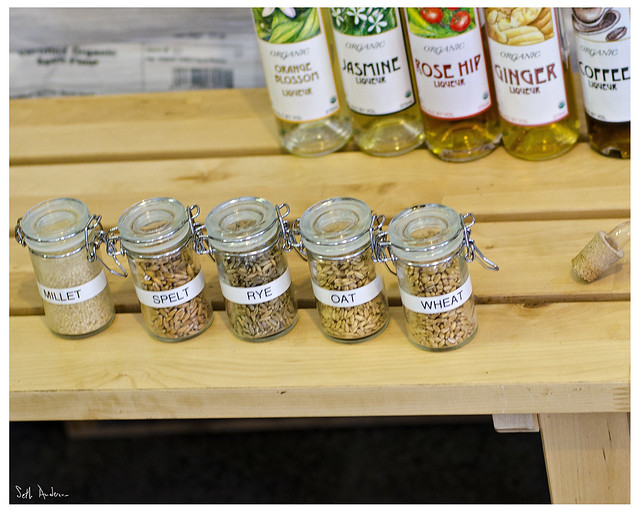
Smiling Tractors Sometimes
The NYT reports:
The factional rancor threatening Republicans heading into the midterm elections this fall erupted into the open on Friday when a slugfest among moderates, hard-line conservatives and House leaders over immigration and welfare policy sank the party’s multiyear farm bill.
The twice-a-decade measure — which would have imposed strict new work requirements on food aid recipients while maintaining farm subsidies important to rural lawmakers — failed on a 213-to-198 vote. It was a rebuke of Speaker Paul D. Ryan by a key bloc of conservatives over his refusal to schedule an immediate vote on a restrictive immigration bill sponsored by the chairman of the House Judiciary Committee.
Republican moderates, for their part, were moving in the opposite direction, shrugging off the pleas of their leaders as they worked toward forcing votes on legislation to protect from deportation young immigrants brought to the country illegally as children.
The fights were striking, not only because of their intensity but also because of the participants. Capitol Hill has grown used to altercations between Republican leaders and their adamant right flank — showdowns that have shut down the government and edged the government toward defaulting on its debt. But in past fights, the party’s moderates have proved compliant.
This time, with their districts dominating the Democrats’ target list for the coming midterm races, the moderates are holding firm to their own demands.
(click here to continue reading House Farm Bill Collapses Amid Republican Disarray – The New York Times.)
More Congressional disfunction, and with no easy solution, at least until the 2018 elections. Paul Ryan has no “juice” left, as he’s a lame duck. He actually should go ahead and resign his Speakership now.

Hay Bales
Tom Philpott of Mother Jones adds a little context:
Back in 2016, the Republican Party won the presidency and both chambers of Congress with strong support in rural areas, particularly among farmers. But since that triumph, the Grand Old Party hasn’t exactly been a champion of rural interests. As I’ve written in recent months, President Donald Trump’s crackdown on immigration is essentially an attack on the workers who keep America’s farms and many rural towns humming. And his trade belligerence with China and Mexico amount to near-surgical strikes against farmers who supported him in California, the Southeast, and the Midwest’s corn and soybean belt.
In the middle of this drama, Congress is tasked with renewing the farm bill—twice-a-decade legislation that shapes US agriculture and food-aid policy. Rep. Mike Conaway (R-Texas), chair of the House Agriculture Committee, hopes to bring his version to a vote on the House floor this week. Let us count the ways it would bring pain to the US heartland:
…
The US House of Representatives voted down the farm bill this morning by a margin of 198-213. The Washington Post called it a “major embarrassment to GOP leaders” like outgoing House Speaker Paul Ryan (R-Wis.), who had hotly promoted the bill. In a Thursday Twitter thread, I laid out the political dynamics that ultimately killed the bill. It remains unclear whether the House Agriculture Committee chair, Rep. Mike Conaway (R.-Texas), will attempt to bring it back to the floor for another vote. House Democrats, who universally opposed the bill, hailed the failure as a victory for the Supplemental Nutrition Assistance Program (SNAP), which the bill would have effectively cut. Here’s Nydia Velázquez (D-N.Y.)
(click here to continue reading The House Farm Bill Just Failed – Mother Jones.)

Wisconsin countryside
and from that referenced WaPo article, the bill is dead anyway, as the Senate is not even close to accepting the House version:
A sweeping farm bill failed in the House on Friday in a blow to GOP leaders who were unable to placate conservative lawmakers demanding commitments on immigration.
The House leadership put the bill on the floor gambling it would pass despite unanimous Democratic opposition. They negotiated with members of the conservative House Freedom Caucus up to the last minutes.
But their gamble failed. The vote was 213 to 198, with 30 Republicans joining 183 Democrats in defeating the bill.
The outcome exposed what is becoming an all-out war within the House GOP over immigration, a divisive fight the Republicans did not want to have heading into midterm elections in November that will decide control of Congress.
…
The House farm bill would have been a non-starter anyway in the Senate, which is writing its own farm bill. Any legislation that ultimately makes it to Trump’s desk will have to look more like the version in the Senate, where bipartisan support will be necessary for anything to pass and there is not sufficient support for the food-stamp changes.
(click here to continue reading In blow to GOP, House fails to pass massive farm bill in face of conservative Republican showdown – The Washington Post.)
Sad that these are the supposed leaders of our country, and they can’t get anything accomplished. I blame gerrymandered districts…




































